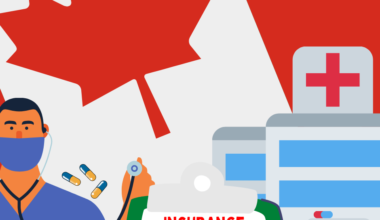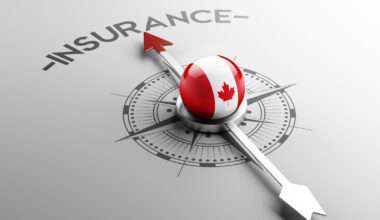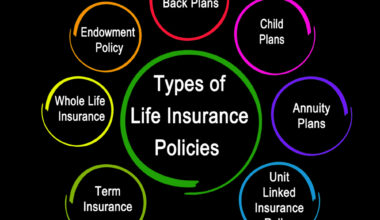Why do crises occur?
The causes of crises are varied and complex. They can be domestic, external, or both.
Domestic factors include inappropriate fiscal and monetary policies, which can lead to large current account and fiscal deficits and high public debt levels; an exchange rate fixed at an inappropriate level, which can erode competitiveness and result in the loss of official reserves, and a weak financial system, which can create economic booms and busts. Political instability and weak institutions also can trigger crises.
External factors include shocks ranging from natural disasters to large swings in commodity prices. Both are common causes of crises, especially in low-income countries. With globalization, sudden changes in market sentiment can result in capital flow volatility. Even countries with sound fundamentals can be severely affected by economic crises and policies elsewhere.
The COVID-19 pandemic was an example of an external shock affecting countries across the globe.
WHY DO WE REACH FOR LOANS AN INSURANCE POLICIES IN THE US IN TIMES OF CRISIS
Technically, the basic function of insurance is the transfer of risk. It aims to reduce financial uncertainty and make accidental loss manageable. It does this by substituting payment of a small, known fee—an insurance premium—to a professional insurer in exchange for the assumption of the risk of a large loss, and a promise to pay in the event of such a loss.
Our society could hardly function without insurance. There would be so much uncertainty, so much exposure to sudden, unexpected possibly catastrophic loss, that it would be difficult for anyone to plan with confidence for the future. Most importantly, it would be difficult to obtain credit or financing since few lenders or investors would be willing to risk funds without a guarantee of safety for their investments.
Defraying the economic costs of disasters
The insurance industry plays a vital role in helping individuals and businesses prepare for and recover from the potentially devastating effects of a disaster such as a catastrophic hurricane, tornado, or wildfire.
Individually, insurers are taking steps to mitigate damage from extreme weather, and many sponsor programs for their customers to fortify their homes and sometimes offer premium discounts for certain features, such as fire-resistive construction. To help homeowners following a loss, many also offer ordinance or law coverage, which covers any increased costs a homeowner incurs for having to bring a building up to municipal code or ordinances following a covered loss. Insurers also are working together to help build resilience in the United States. Many of them fund the Insurance Institute for Building and Home Safety, dedicated to reducing and preventing losses that disrupt the lives of millions of home and business owners each year.
Natural Catastrophe Losses In The United States By Peril, 2022 (1)
($ millions)
|
(1) Natural disasters that cause at least $25 million in insured losses; or 10 deaths; or 50 people injured; or 2,000 filed claims or homes and structures damaged. Includes Puerto Rico and the U.S. Virgin Islands.
(2) Includes any direct physical damage or direct net loss business interruption costs.
(3) Includes losses sustained by private insurers and government-sponsored programs such as the National Flood Insurance Program. Subject to change as loss estimates are further developed. As of January 2023.
Source: Aon
Spreading of Risk:
The basic principle of insurance is to spread risk among a large number of people. A large number of persons get insurance policies and pay a premium to the insurer. Whenever a loss occurs, it is compensated out of the funds of the insurer. The loss is spread among a large number of policyholders.
Insurance covers the loss of an individual but the social loss cannot be eliminated. If the property of a person is lost by fire, he will be compensated by the insurance company. The loss of goods will remain a social loss. Insurance cannot eliminate loss but it can reduce the risk to the individual.
Medical support:
Medical insurance is considered essential in managing risk in health. Anyone can be a victim of critical illness unexpectedly. And the rising medical expense is of great concern. Medical Insurance is one of the insurance policies that cater to different types of health risks. The insured get medical support in case of the medical insurance policy.
An insurance policy performs various functions and comes with multiple benefits. Below are some of its most fundamental advantages, along with some of the secondary, and the rest are additional ones. The basic functions of insurance coverage are:
1. Provides Protection
Insurance coverage does reduce the impact of loss that one bears in perilous situations. It provides monetary reimbursement during financial crises. It not only protects the insured from financial woes but also helps in checking the mental stress arising out of it.
2. Provides Certainty
Insurance coverage provides a feeling of assurance to the policyholders. The insured pays a small portion of the income for this certainty that will help in the future. So, there is a certainty of handsome financial aid against the premium. It will protect the policy buyer when met with accidents, hazards, or any vulnerabilities.
3. Risk Sharing
The very manner in which insurance policy functions makes it a cooperative scheme. An insurer would be unable to pay from one’s capital. An insurance company pools in collective risks and premiums because it covers a large number of risk-exposed people. The payout to the one who claims insurance coverage is out of this fund. Thereby, all policyholders share the risk of the one who suffered the loss.
4. Value of Risk
Insurance policy assesses the volume of risk and also anticipates the various causes of it. It evaluates the amount for insurance coverage and the premium payment amounts on a risk valurisk-valuet safeguards against unforeseen events and consequential loss.
Above were the primary benefits of an insurance coverage policy. Apart from the above, it also has some additional benefits and secondary functions that it performs such as the ones mentioned below:
1. Capital Generation
The fund generated from the various premiums acts as a pooled investment for the insurance company. The insurers invest this lump sum into money market instruments. For instance, in stocks, mutual funds, and other productive channels. This helps in generating income and profit for the business. It guards against the loss of capital for the company.
2. Economic Growth
Insurance policies mobilize domestic savings into providing financial stability. It also directs towards loss mitigation due to damage or destruction for the insured community. It not only equivalently spreads the risks but also promotes trade and commerce by utilizing the fund.
3. Saving Habits
Insurance policies help inculcate saving habits among individuals. They keep a portion of their income to pay premiums that will act as a guard against unknown future predicaments. Many insurance plans come as insurance-cum-savings or insurance-cum-investment schemes. This further encourages people to save and invest.
BETTER WAYS TO PREPARE FOR CRISIS
Loans are not always the best in the time of crisis insurance policies can cover it but loans are not encouraged safe on calculated results or outcomes.
Assess your spending habits
Take a look at what you’re spending, said Diahann Lassus, president, and chief investment officer at Lassus Wherley, a subsidiary of Peapack-Gladstone Bank in New Providence, New Jersey.
If your credit card bills are out of control, it’s time to rein in that spending, she said. That means curbing unnecessary discretionary expenses.
Also, take stock of where you are with your cash flow. If your job feels shaky, now is the time to refresh your resume before a job loss.
“Don’t wait until it happens,” Lassus said. “Think about what you would do.”
Don’t try to time the market
After downturns, the market has always recovered, said David Karp, co-founder of PagnatoKarp, though some recoveries have taken longer than others.
Trying to time the market is consistently a losing proposition, he said.
“You can get it right once, and I’ll call it luck,” Karp said. “But getting it right twice is what you need to do … You’ve only won if you figured out when to get back in.”
Build up your cash reserves
Karp recommends investors have as much as 18 months’ worth of their money in cash.
That money can make it so you know where the funds for your lifestyle for the next two to three years are coming from, particularly if you’re close to retirement.
“Cash is priceless if you have it when you need it,” Karp said. “And ‘need it’ means [that] in a market sell-off of 40 or 50%, you have the buying opportunity of a generation.”






